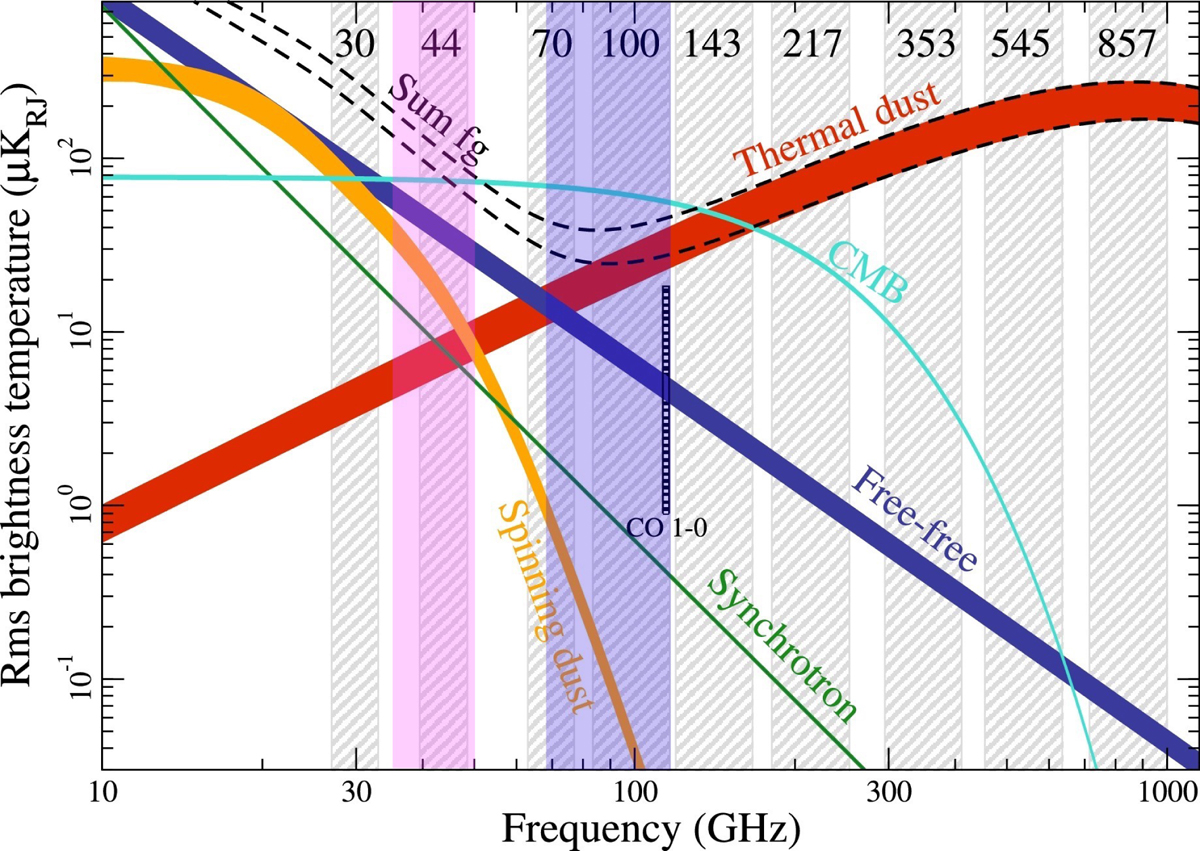Fig. 2.

Combined millimetre/sub-millimetre spectrum of foreground dust, synchrotron, anomalous microwave emission, etc., plotted with the band centres of the instruments on the Planck satellite denoted (grey vertical bands). The ALMA wide RF Band 2 (transparent dark blue region) will cover most of the Planck 70 and 100 GHz channels (Tauber et al. 2010), where the sum of the contributions is lowest. We also highlight Band 1 (35−50 GHz; transparent magenta region), which together with Wide RF Band 2 will likely leverage the free-free and spinning dust contributions. Figure is adapted from Dickinson et al. (2018) to highlight the role of the lower ALMA bands.
Current usage metrics show cumulative count of Article Views (full-text article views including HTML views, PDF and ePub downloads, according to the available data) and Abstracts Views on Vision4Press platform.
Data correspond to usage on the plateform after 2015. The current usage metrics is available 48-96 hours after online publication and is updated daily on week days.
Initial download of the metrics may take a while.


